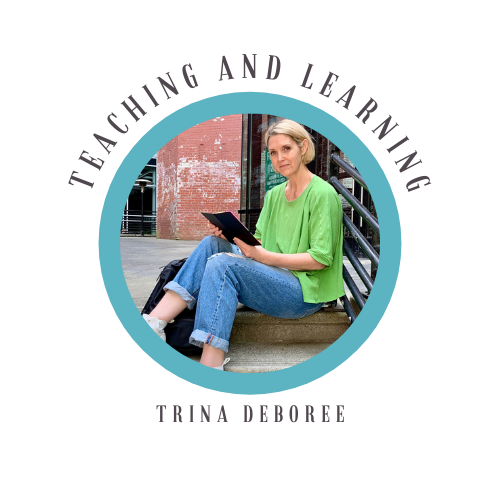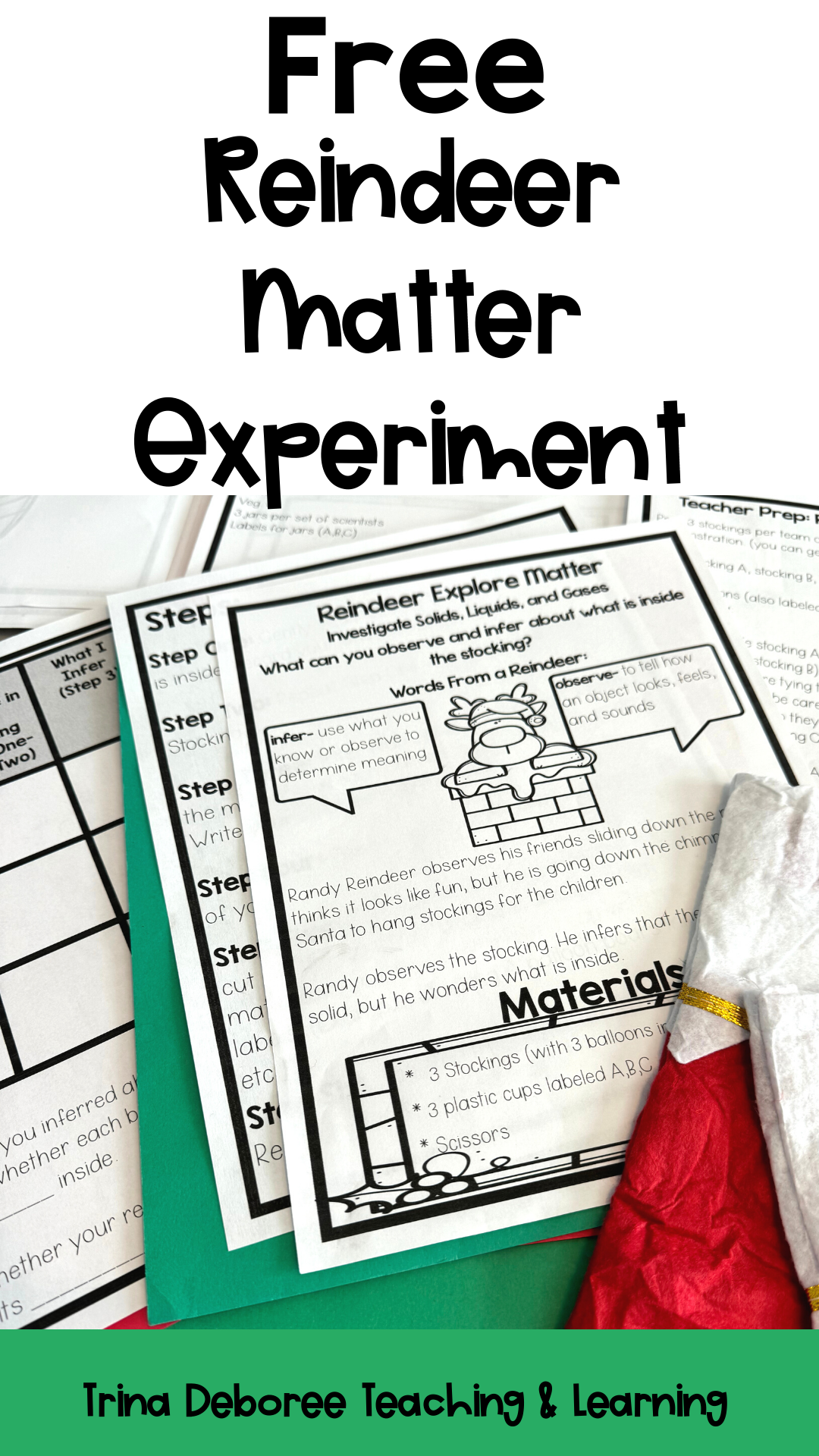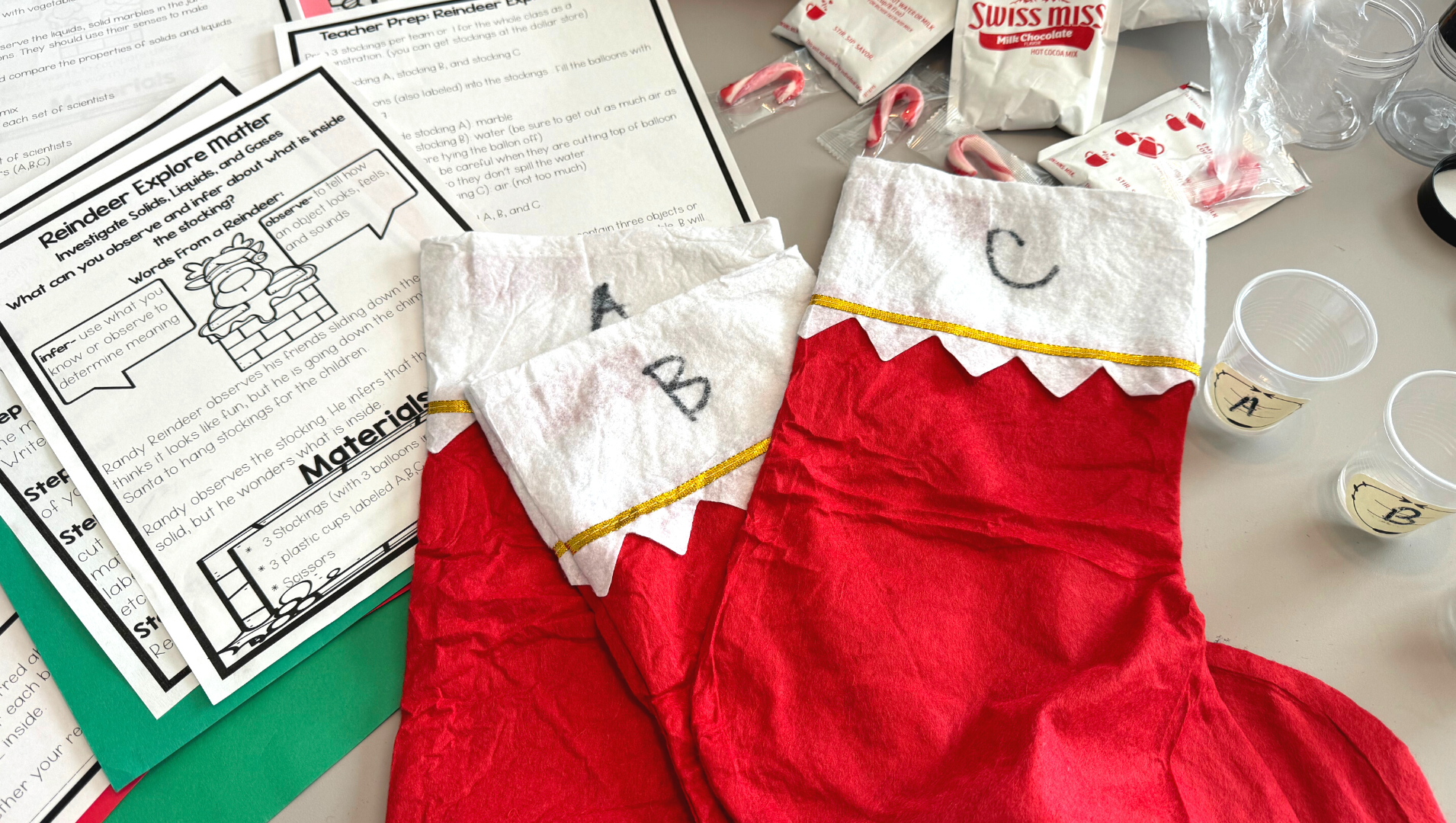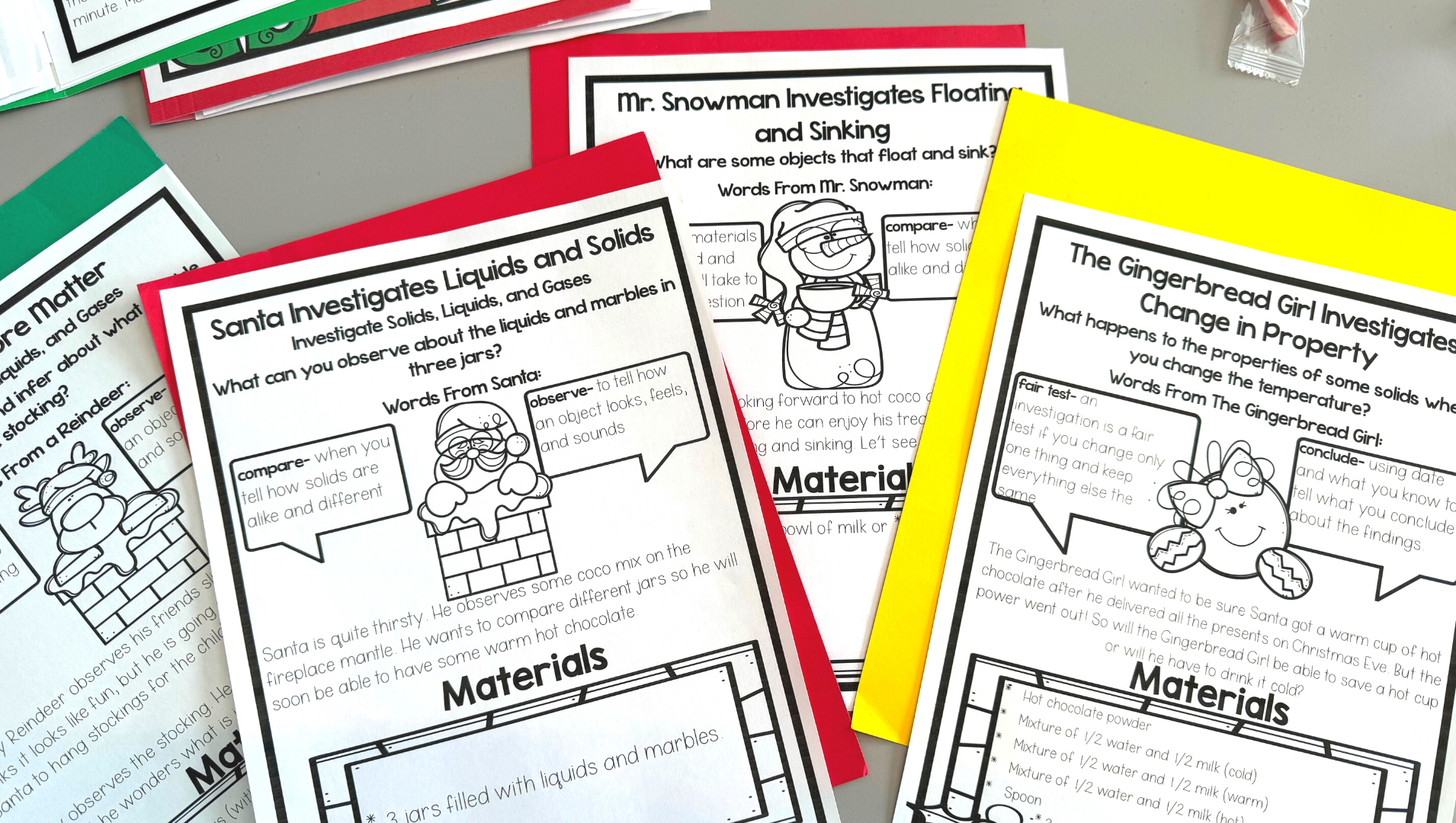OTT 56: Hands-On Christmas Science
It's that time of year again. It's the holiday season, and we're gearing up for Christmas science activities and chemical reactions!
It is unbelievable how fast jingle bells are upon us. We got through Thanksgiving and crazy Halloween, so it is time for Christmas decorations and a fun way to spend our days in December. School can be insane this time of year, so finding activities, STEM activities, or anything that allows kids to learn and have fun is essential! Seeing hands-on, high-engagement activities to keep those little guys understanding and distracted from all the presents makes all the difference at this time of year!
I love hands-on learning and anything that gets kids thinking, exploring, and learning. This approach goes a long way in December.
How will we get through this crazy time of year until winter break? Will it require Christmas slime or science sparks? Maybe, but it doesn't have to. Taking some time for yourself is a must this season. If you need ideas, tune into episode 4 of One Tired Teacher, OTT 04: Surviving the Weeks Before Winter Break.
Christmas Science Experiments With States of Matter- Solids, Liquids, and Gases
Christmas science can be so fun and is a great way to engage students! I want to tell you about a unit I created, Holidays Matter, which is based on states of matter, properties of matter, and changing states with solids, liquids, and gases. This unit has four fun science experiments and many more Christmas activities.
{Disclaimer: Affiliate links have been used below, but I only share items I actually use and enjoy!}
When I taught this unit, I had the kids wear lab coats made from white dress shirts from Goodwill. So much fun! Eventually, I got lab coats for each one of them. You can find those here. These lab coats from Amazon also come with safety goggles and name tags. Adorable! You may need to get two sets of 16, but you can use these for years to come.
Step One: Determine Your Standards and Objectives or Big Ideas
First things first: I took the standards we were meant to teach in science. I took the big ideas: What is matter? What are solids, liquids, and gases? How can you observe and measure properties? How do liquids and solids change in their states of matter?
You should review the big ideas with students at the beginning of the unit, refer to them throughout the unit, and revisit them at the end. I even posted the big ideas for the kids to see throughout the unit.
I also knew I wanted to include some easy science experiments, and this unit quickly became one of my favorite Christmas science experiments and definitely one of the kids' favorite units of the year.
Step Two: Go Over the Vocabulary
Next, you will want to review the vocabulary that kids need to understand. I did this by assigning words to holiday characters. Younger children find vocabulary much more fun with a holiday theme. Also, this makes the words relevant and easy to remember.
For example, the first set of vocabulary words are words from a snowman. A snowman is perfect for winter, and kids of all ages love a fun snowman!
Step Three: Quick 2nd Grade Vocabulary Christmas Scene Assessment
Next, students are shown quickly what they know about the vocabulary words. A Christmas scene is displayed, and the students must determine whether each picture is a solid, liquid, or gas. For example, the wrapping paper of a present is a solid. There would be a line next to the present, and students would have to label solid, liquid, or gas. Different liquids, such as hot chocolate, may also be indicated. Students must tell whether each liquid is solid, liquid, or gas.
Another example is candy canes, which are solids. The steam from hot chocolate is an excellent way for kids to understand gases. It's like hot chocolate science!
Twas, the Three States of Matter is a fun way for kids to solidify their understanding of the vocabulary words just taught. This activity can be used as a quick formative assessment.
You may even want to have some of these Christmas items out for kids to explore with their hands. These may include Christmas cookie cutters, Christmas liquids with warm water and cocoa mix or water colored with food coloring, a Christmas tree ornament, fake snow, a pine cone, Christmas lights, cinnamon sticks, a gingerbread house, and more. This sensory play can help kids really grasp the meaning of solids, liquids, and gases. You could even put these items in small bins for kids to explore.
Step Four: Fun Christmas Science Experiments
This first experiment is available for FREE!
The first experiment you do is where students explore matter- solids, liquids, and gases. Students will observe that the stockings contain three objects or substances. Students will record observations of each stocking. They will then infer whether the stocking includes a solid, liquid, or gas, and finally, they will record their findings.
Printables and teacher prep are included in this free unit and are included in the entire Christmas Science unit.
Here are the materials for Reindeer Explore Matter:
3 stockings per team labeled A, B, and C (this pack contains 12 stockings for under $10, making 4 groups)
3 balloons per team labeled A, B, and C (this pack contains 120 balloons for under $5)
1 marble for each team (see below) (this pack contains 50 marbles for under $5). You don't have to use marbles. You can use any solid you have in your classroom.
3 plastic cups labeled A, B, and C (you will want this for the water in balloon B)
Here is what goes inside of the balloons:
Balloon A (inside of stocking A): marble
Balloon B (inside of stocking B): water (be sure to remove as much air as possible before tying off the balloon)
Balloon C (indie of stocking C): air (not too much)
Watching the faces of the kids as they make predictions is so fun! They are adorable.
There are three more Christmas science projects or experiments involving matter and its changing properties. Each experiment was created with young children in mind. Kids will have a great time learning about matter during this Christmas season.
Step Five: Integrate Nonfiction Text
Christmas Science States of Matter Solids, Liquids, and Gas Explorations & More also contains nonfiction written from a holiday character's perspective, all about properties of matter, measuring properties of matter, and matter changing shape. Integrating science into your reading block allows you to reclaim time for hands-on science!
You can do the reading as a close or shared reading so that all students can access the text. You can also do this as a partner read. Standards-based questions are also included.
Step Six: Student Assessment
Finally, a simple summative assessment will determine what the students learned during this unit. Each of the big ideas will be addressed.
As the holiday season twinkles with festive lights and the aroma of gingerbread lingers in the air, it's the perfect time to add a dash of science to the Christmas cheer. We've explored the delightful intersection of holiday fun and educational growth, all wrapped up in a shiny package of hands-on learning. From donning lab coats to diving into vocabulary with a holiday twist, these Christmas science experiments provide an engaging way for kids to stay connected to learning even as the season's excitement peaks.
We've journeyed through the states of matter with the help of stockings, balloons, and a sprinkle of Christmas magic. The thrill of watching children's faces light up as they make predictions and observations is a gift in itself. Integrating science with nonfiction texts, we've ensured that learning is both comprehensive and enjoyable. Whether it's the Reindeer Explore Matter experiment or the assessments that bring a festive flair to science standards, every step has been a building block towards understanding—and each block has been a joy to place.
Materials Needed for this Unit (Beyond the materials listed above):
Hot cocoa (This is a huge box. You don't need this much, but it is nice to have on hand for a Polar Express PJ day.)
Marshmallows - these are probably cheaper at the grocery store
Christmas cookies
Powered Donoughts
As I wrap up this blog post like a carefully tied bow on a Christmas present, remember that the true essence of these activities lies in the smiles and the sparks of curiosity they ignite in our young learners. These experiments are more than just educational tools; they are memories in the making, experiences that blend the wonder of the holidays with the ever-growing tree of knowledge.
So, as you string up the lights and decorate your tree, consider these Christmas science experiments as ornaments of learning, each one adding to the beauty and the spirit of the season. Whether you're a teacher looking to bring festive fun to the classroom or a parent seeking to infuse learning into holiday home life, let these activities be a part of your tradition. Celebrate the season, cherish the joy of learning, and may your holidays be merry, bright, and scientifically delightful!
For those ready to embark on this merry educational adventure, visit Christmas Science States of Matter Solids, Liquids, and Gas Explorations & More to access all the experiments and resources discussed.














